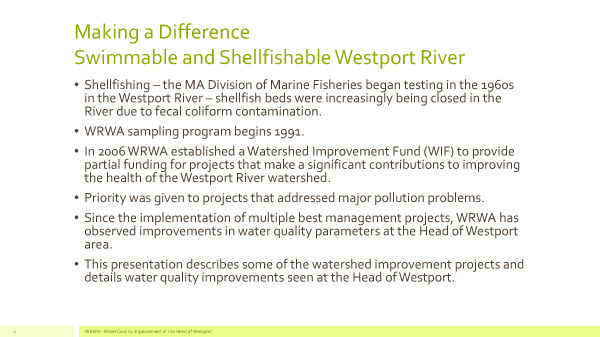
Stormwater Projects

So, what’s polluting the water and how can this be fixed?
We need to come to terms with the fact that water resource ailments have one thing in common: the source of contamination. That source is mainly us.
Through our daily activities, we inadvertently pollute our own precious water resources with the many pollutants we leave on the landscape that wash into the water. These include lawn and agricultural fertilizers, antifreeze and oil from our cars, pet waste and our own waste. Much of the damage is done by water washing off streets and parking lots. Because the rainwater in the streets can’t be absorbed into the ground where the soil filters and treats most of the pollution, it simply washes the pollution off of these hard surfaces and into our waterways.
Water in the form of rain is fairly clean when it leaves the clouds. When it hits the land it can be absorbed into plants and the ground, or it can hit hard surfaces, flowing off and picking up everything along the way; oil, bacteria, nitrogen, heavy metals, and other pollutants. What’s in the runoff (often called stormwater) can affect our drinking water, shellfish beds, fisheries, stream and river health, soil health, and other resources.
Even when rain hits hot pavement it gets heated and then might flow into a cold stream, this has a specific negative impact. Several fish species, such as our rare and local sea-run brook trout, need cold and clean streams and are affected greatly by any large changes in temperature.
There are many ways of removing pollutants from stormwater to clean up the water re-entering our water supplies, streams, and rivers. Many times the solutions involve slowing the stormwater down so that it can absorb into the soil, which will helps to filter out pollutants. In other situations plants or mushrooms can help remove oils, heavy metals, and some excess nutrients. Other areas might require chemical or mechanical filters. These are just a few examples of solutions to stormwater pollution, and each site needs the proper solution to be tailored for the location.
WRWA works to locate many of the stormwater issues in the watershed and provide resources to help clean up pollution. There are a number of local stormwater issues and projects that WRWA has focused on:
These projects were worked on by the State, the Town, individuals, organizations, and local contractors. WRWA worked alongside many other groups and individuals to complete them. There are plenty of things that you can do on your own property to help lessen the amount of pollutants that enter into the watershed.
Visit these sites and learn how to be the solution to stormwater pollution. The best way to clean up stormwater pollution is to prevent polluted runoff in the first place.


Describe your image

Describe your image


Describe your image



